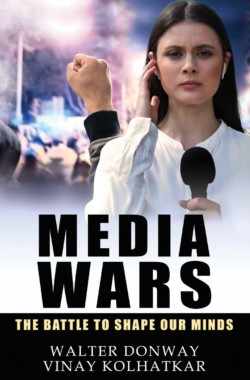The Wildebeest Herd of Washington Economists
“The crowd never thinks. People are only comfortable in a pack, and they’re most comfortable in one that’s racing off a cliff.”
The Golden Pinnacle, by Robert Gore
Herd animals herd because there is safety in numbers. Even if the wolves or lions attack, they’re only going to get a small percentage of the herd. Such attacks even have an evolutionary advantage: they eliminate sick or weak members. Those who think humans are not herd animals labor under such vast misconceptions that they are beyond the reach of logic.
Herd animals herd because there is safety in numbers. One herd, Wall Street-Washington economists, surpass wildebeests and sheep.
One herd, Wall Street-Washington economists, surpass wildebeests and sheep. Their behavior, because it is so uniform, can easily be described. Membership in one of two subspecies is required: Keynesians or monetarists. Both have long histories of predictions that didn’t predict and policy remedies that didn’t remedy, but they all believe because they all believe. Intellectual foundations this shaky increase individual and group insecurity, so they base their work on the same set of statistics emanating from the government. The government’s assumptions, methodologies, and conclusions are never questioned, except by outcasts from the herd. After all, those assumptions, methodologies, and conclusions come from the herd itself.
The instinctive defensive tactics of the herd are the consensus and the wavering straight line. Economists are well aware of the expectations and predictions of other economists, and tend to cluster tightly around a given consensus. Occasionally an economist will deviate by a quarter or a half of a percentage point from the consensus, instead of the usual range of a tenth of a percent either way. It is thought by those who study these matters that this exaggerated and ostentatious display of independence can, if done only occasionally, make the individual stand out and thus promote advancement within the herd. Or perhaps it’s to attract a mate. Further study is required.
The wavering straight line projects the most recent past into the future. It is considered good form not to make perfectly linear projections, thus the “wavering.” The standard projection will be: We (as herd animals, plural pronouns are preferred) see GDP increasing from 2.2 to 2.4 percent this quarter. Or: We see inflation moderating from 0.3 to 0.2 percent. It is also considered good form to make projections that show increases in desirable variables and decreases in undesirable variables. What is not good form is to predict a clean break, a clearly nonlinear outcome, especially if it can be characterized as negative (e.g., the economy is headed into recession). Such a prediction will lead to expulsion from the herd, unless the prediction is correct, in which case the predictor will be killed.
The herd has called for an imminent “lift off” in the U.S. economy, and it has been doing so for six years.
The herd has called for an imminent “lift off” in the U.S. economy, and it has been doing so for six years. During that time the U.S. government has issued unprecedented amounts of debt (Keynesianism), the Federal Reserve has engaged in unprecedented debt monetization and interest rate suppression (monetarism), and the U.S. has been unable to achieve even one year of the 3 percent annual growth that used to be routine. The herd has responded by either calling for more debt, monetization, and suppression, or positing that for some reason there have been structural changes in the U.S. economy that have led to “secular stagnation.” The herd has not explored the possibility that all that debt, monetization, and suppression are part of the problem rather than the solution. Herds never question their own articles of faith.
However, just as the more astute and aware sheep and wildebeests will sense the wolves and lions stalking the herd, a few of the economists sense something amiss. Slow growth may not give way to lift off, but rather a recession beckons, or worse. Ominous portents are piling up.
Assurances have been given that the carnage in natural resources will remain contained, echoing assurances made in 2006 and 2007 concerning housing and mortgage finance. However, there has been no V-shaped recovery in oil, natural gas, copper, coal, fertilizer components, zinc, nickel, and other natural resources; the prices of many are still going down. Producers are reluctantly concluding that no happy outcomes are in the offing. Projects are being shelved and inventories and other assets dumped on the market at whatever prices they can fetch. Glencore, the Swiss mining company, has halted production at two huge African copper mines and pledging to sell up to $10 billion to cut its debt. It’s no sure thing that the company will survive; the exploding premiums on credit default swap (CDS) protection for its debt indicate substantial credit-market doubt.
Cutting debt has become all the rage. If you wanted to put together a fracking firm, now would be the time to do so. Prime drilling rigs and properties are available cheap as debt incurred when oil was $100 a barrel weighs heavily now that oil is in the forties (See “Shale Drillers Turn to Asset Sales as Early Swagger Wanes,” by Bradley Olson). Oil and gas producer Samson Resource Corp., midwifed by private equity firm KKR, just filed for bankruptcy. KKR and its partners will take a $4.1 billion hit, not chump change even for KKR. And so the not-contained carnage in natural resources ripples out in all directions. The losses inflicted on creditors are just one of the more obvious ripples.
The debt-fueled Chinese “miracle” is over. China was the engine of global demand on the way up; it’s at the epicenter of debt contraction on the way down.
The debt-fueled Chinese “miracle” is over. China was the engine of global demand on the way up; it’s at the epicenter of debt contraction on the way down. It was the dream of perpetual Chinese hyper-growth that led so many companies to take on debt and ramp up capital spending and production. China has built infrastructure and whole cities on spec, debt-funded mal-investment on command and control steroids. Even communists have their “uh oh” moments, when they realize that something has to give. Let a thousand, or a million, or a billion, debts contract. China’s demand is dropping like a stone and it is exporting goods—steel, aluminum, and diesel—that for years it imported. Everyone knows that its claimed 7 percent growth is fiction, but nobody knows what the real number is. Lurking within the state-dominated banking system is a lot of rancid debt. The cherry on the sundae: last year the government promoted a margin-fueled stock bubble that has now burst.
Not surprisingly, the money that flowed into China from trade surpluses and foreign investment has reversed as well, pressuring the yuan’s exchange value. In a stark illustration of the Command and Control Futility Principle (governments and central banks can control one, but not all variables in a multi-variable system), China needs to lower the yuan’s value to remain competitive in global trade, but needs to raise its value to keep capital from fleeing. It recently undertook a token devaluation against the dollar that precipitated global financial panic, but at the same time it has been selling some of its hoard of U.S. Treasury debt to buy yuan to support its value. The Chinese government has made schizophrenia official policy because it is impotent against the great global debt contraction now underway. It feels compelled to do something because governments always do something, invariably making matters worse.
The Chinese ramifications aren’t ripples; they’re shockwaves. Brazil, its economy grown dependent on exports to China, has entered recession; had its debt rating knocked down to below investment grade; seen its currency make new lows almost daily, and has been rocked by a scandal implicating much of its elite—including President Dilma Rousseff, whose approval rating is a single digit—and the national oil company, Petrobras, upon whose massive debt, much of it dollar-denominated, traders are making book on bankruptcy. Brazil is the poster child for many China-dependent emerging market nations.
Will the world pull out of this debt contraction? Will plunging high-yield, equity, commodity, and emerging market currency markets reverse course? Can governments and central banks save the day? Will the economic tsunami miss U.S. shores? Not a chance, not a chance, not a chance, and not a chance, no matter how many mainstream economists swear otherwise on their stacks of Keynes and Friedman.
World trade volumes and shipping rates are going from new lows to new lowers. In credit markets, the interest spread between what the U.S. Treasury and bank borrowers of Eurodollars pay (a measure of bank risk) is growing, junk bond yields are rising, CDS spreads are widening, and default rates are notching up, tolling bells for other markets, especially equity markets. (The same things happened in 2007; the following year was not a good one for equities). Stock markets have sold off since the head of the world’s most important central bank put a dovish spin on her announcement that free money would not be terminated; the black magic no longer works.
When things have gotten considerably worse, a panicked cry will sound from the economist herd: Nobody could have seen this coming!
In the U.S., second quarter S&P earnings growth was negative, even while corporations spent 108 percent of their free cash flow on dividends and buybacks (See “Why Stocks Are Sliding: For The First Time Since 2009 Spending On Buybacks Surpasses Free Cash Flow,” by Tyler Durden). Nothing offers a connect-the-dots illustration better than industrial bellwether Caterpillar, which makes many of the machines used around the world to extract minerals and build buildings and infrastructure. Recently, after 33 straight months of declining year-over-year sales, it announced it will lay off 10,000 workers.
While the broad contours of what’s to come are visible, the details will only emerge over time. There is one certainty. When things have gotten considerably worse, a panicked cry will sound from the economist herd: Nobody could have seen this coming! It is to be hoped that it sounds just before they run off a cliff, extinguishing the species.
« The Nature of Consciousness The Flaw in the Private Property Anti-Immigration Argument »










